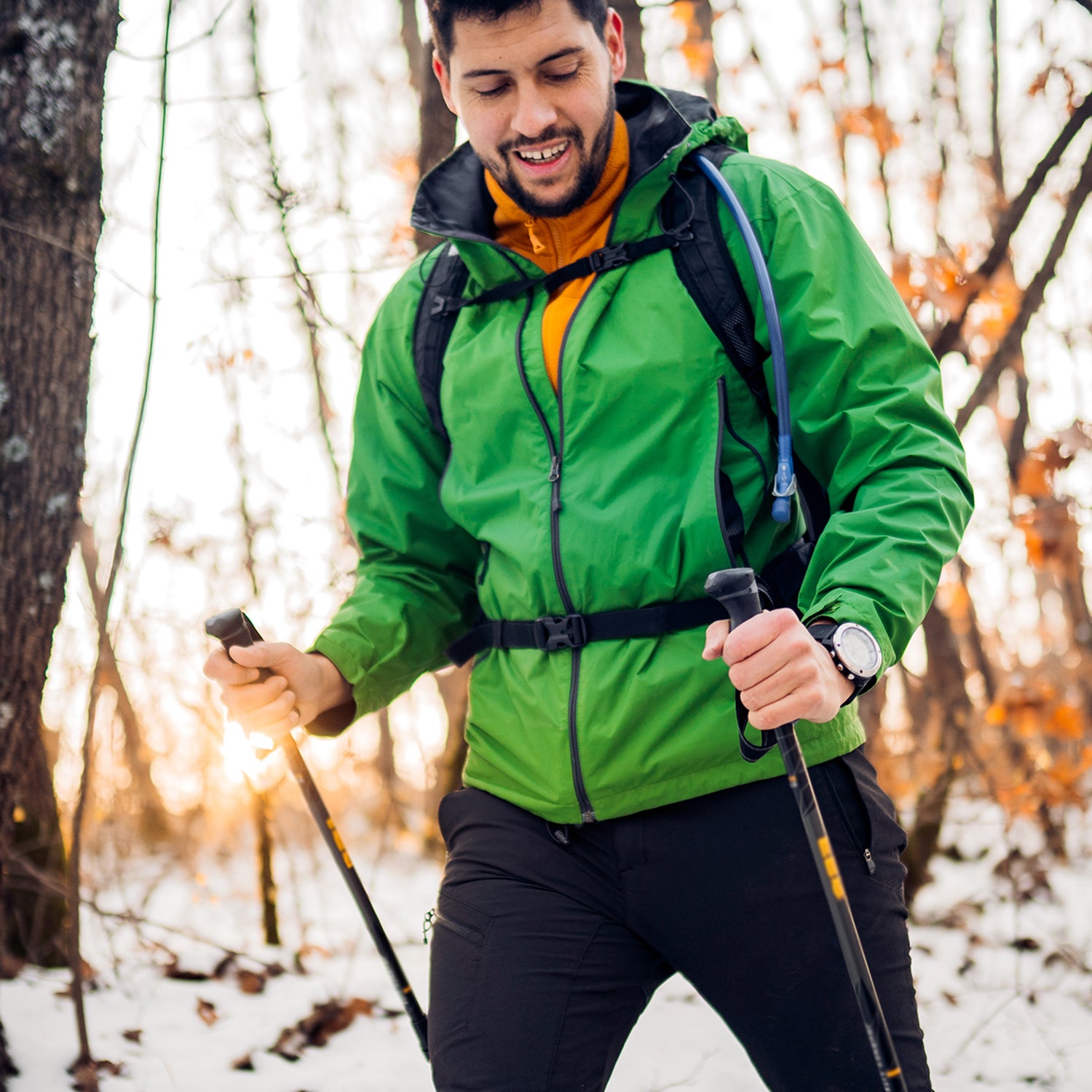A modern fleece jacket is essentially a better sweater. It performs the same role as those fisherman’s cable knit jobs of yore: you wear it over your baselayer to keep you warm when the elements turn nasty. But it is lighter and quicker drying, designed for backcountry travel when every ounce counts.
We tested thicker fleeces for colder temps, more breathable fleeces for high-intensity activities, wool-based fleeces that are naturally odor-fighting, and synthetic fleeces for better durability. Our test crew put these midlayers through the ringer while skiing, running, cycling, and climbing, wearing them with waterproof shells and without. We also kept an eye on the style, as, in our opinion, there’s truth to the notion that we perform better when we look and feel great.
At a Glance
- Editor’s Choice:
- Best for High-Intensity Exercise:
- Most Durable:
- Best for Frigid Temps:
- Most Breathable:
- Best for Spring Skiing:
- How to Choose a Fleece
- How We Test
- Meet Our Lead Tester
If you buy through our links, we may earn an affiliate commission. This supports our mission to get more people active and outside. Learn more.
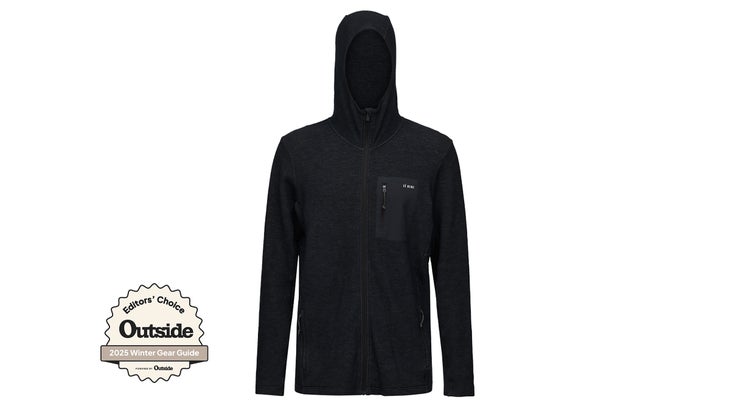
Editor’s Choice
Lé Bent Sentinel Midweight Waffle Knit Zip Hoody
Weight: 14 oz
Sizes: S-XL
Warmth: 7/10
Breathability: 10/10
Durability: 7/10
Pros and Cons
⊕ Super Stretchy
⊕ Excellent warmth-to-weight ratio
⊕ Great breathability
⊕ Constructed out of natural fibers
⊗ No way to cinch the lower hem
For such a classy hoodie, the Sentinel has a lot going on. First and foremost, it’s knit using Nuyarn, a product from a New Zealand-based company that’s developed a way to spin merino wool fibers into a stretchier, loftier, and more durable, yarn. Nuyarn creates a custom yarn blend for each brand partner, and we love that Lé Bent chose to integrate natural bamboo fibers—rather than synthetic polyethylene—making for a more sustainable garment.
In our testing, no performance was sacrificed in the choice; the Sentinel was remarkably stretchy, tough, and warm for its weight. The Sentinel’s waffle knit structure adds further loft, and therefore warmth, and lends a chic texture that made the garment stand out from the rest of the fleeces we tested. Our test team agreed that it’s the quintessential four-season mountain layer: light, stretchy, and breathable enough for high-output activity in the cold, thin enough when temps are warmer, and roomy enough to layer under when temps turn brutal. Zip it on for a winter expedition, or for that first date at the bistro.
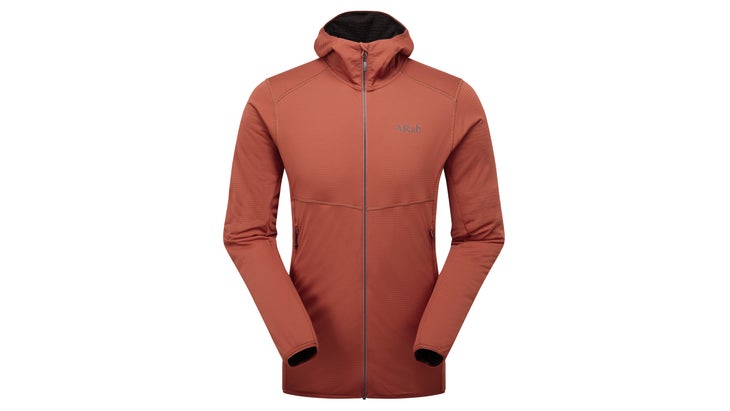
Best for High-Intensity Exercise
Rab Evolute Hoody
Weight: 12 oz.
Sizes: XS-XL
Warmth: 8/10
Breathability: 9/10
Durability: 7/10
Pros and Cons
⊕ Exceptional warmth to weight ratio
⊕ Very quick drying
⊕ More than 50 percent recycled materials
⊗ May need to size up
The Evolute pulls off a pretty impressive trick: it was one of the most breathable fleeces we tested while also offering some of the best weather protection. The secret lies in the Primaloft Active Evolve fleece’s construction—silky polyester fibers woven to a mesh chassis with lots of space between them. That space makes for lots of trapped air for insulation, but it also provides room for breathability when things get too steamy. Because the fleece structure is too airy to stand alone, it’s paired with a thin outer fabric that brushes off wind and abrasion.
The Evolute became an everyday layer for one tester, our New Hampshire-based winter trail runner. “It was crazy warm, but I never felt clammy no matter how hard I went,” he said, “even if I was a little overdressed.” Rab kept it super-light with elastic at the hem, rather than a draw cord, and just a pair of zippered hand pockets.
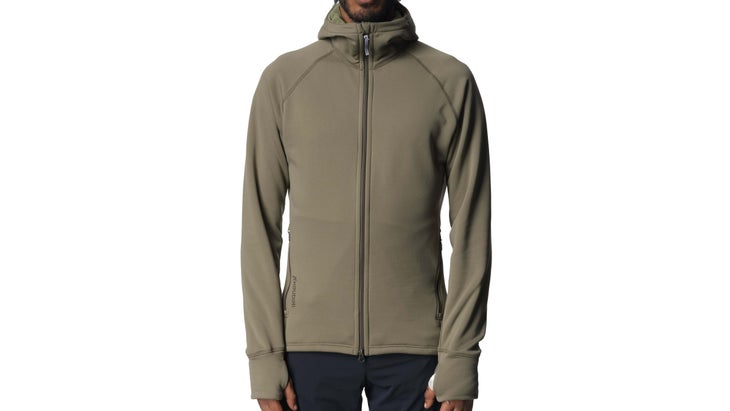
Most Durable
Houdini Power Houdi
Weight: 1.05 lbs
Sizes: XS-XXL
Warmth: 9/10
Breathability: 7/10
Durability: 10/10
Pros and Cons
⊕ Excellent warmth to weight ratio
⊕ Very soft and stretchy
⊕ Excellent durability
⊗ Expensive
⊗ Runs slim
The Power Houdi has been Houdini’s core product since 2003, with few changes. Customers report that the garment can last them up to 10 years, and many boast multiple, in different colors. When we got our hands on some, it became obvious why they are so beloved. One tester described the Power Houdi as “instant coziness,” and all remarked on how bombproof it is. One tester said it easily shrugged off friction from shouldered skis while heading up Jackson Hole’s notorious White Spider boot pack, and from the sandstone on Boulder’s Flatirons during a spring climbing mission, reported another. That Flatirons scrambler loved the Houdi’s two-way zipper that allowed him to more easily access his climbing harness as well as the sturdy thumb loops on the sleeves that kept his hands warm despite clinging to the cold rock.
The secret is the very thick Power Stretch Pro fuzzy fleece fabric, the elasticity of which helps it ward off puncture and retain its snug fit. The only drawback we saw was that the Power Houdi, despite very good breathability, was simply too warm on milder days. It’s worth noting that the European-style fit is long and narrow.
PAID ADVERTISEMENT BY PUBLIC LANDS
Patagonia Men’s Synchilla Fleece Jacket ($149)
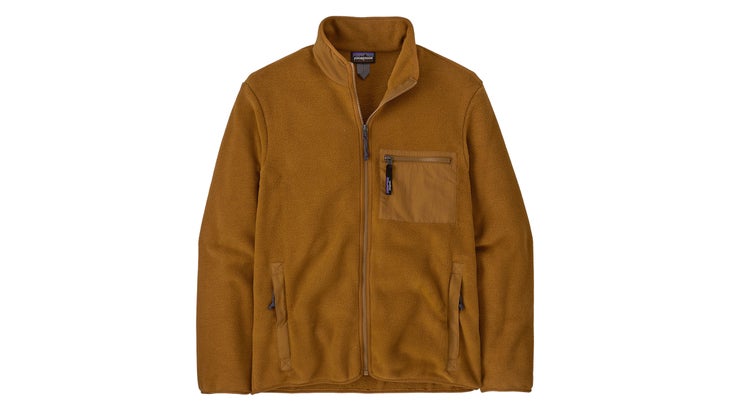
For a cozy and classic fleece, look no further than the Patagonia Men’s Synchilla Fleece Jacket. Made of 100% recycled polyester and Fair Trade Certified sewn, this full-zip jacket features double-sided fleece and an anti-pilling finish to keep it looking like new. The stand-up collar is designed for warmth, while the rugged outer collar is trimmed with recycled nylon plain weave. The left-chest pocket and two welted front pockets, all with webbing zipper pulls, provide plenty of space to stash your essentials. Durable, set-in sleeves ensure comfort while wearing a pack, and recycled nylon helps this classic hold its shape and resist abrasion—making it a true essential for every cool-weather outing.
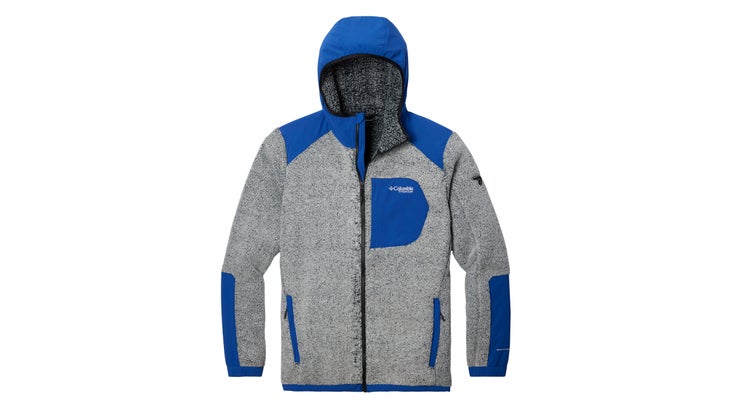
Best for Frigid Temps
Columbia Arctic Crest Sherpa Full Zip Fleece Jacket
Weight: 1.3 lbs
Sizes: XS-XXL; 1X-6X; LT-5XT
Warmth: 10/10
Breathability: 7/10
Durability: 9/10
Pros and Cons
⊕ Abrasion and weather resistant patches
⊕ Great value
⊗ A little heavy
⊗ No recycled content
The heat-capturing Omni-Heat Arctic tech in Columbia’s Arctic Crest Sherpa fleece was inspired by polar bears. Turns out that the arctic ursine’s fur isn’t white just for camouflage to sneak up on seals, it’s actually translucent to allow the scant winter sunlight to pass through to the black skin beneath, which absorbs the heat like a black T-shirt on a hot summer day. The dense fur then helps trap that heat next to the skin in a micro-greenhouse effect.
Similarly, the Arctic Crest fleece uses this solar-capture insulation trap warmth from the inside. Worn by itself without a shell on top, the Arctic Crest was a furnace on the ski track, leading one tester to joke that he felt hot enough to “rip apart an igloo bare-handed.” Testers also loved the Arctic Crest’s full feature set—nylon DWR-treated panels on high-wear areas like the hood, shoulders, and forearms, three zippered pockets for secure storage, and hidden elastic drawstrings at the hem to seal in heat. The only downside? Those niceties add weight.
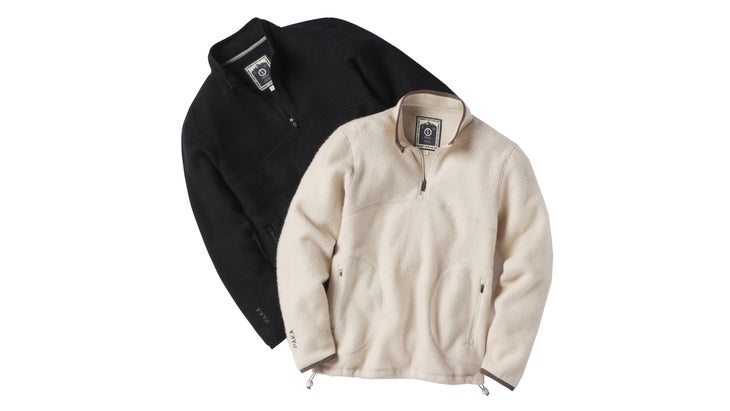
Most Breathable
Paka PAKACLOUD
Weight: 14.5 oz
Sizes: XS-XXL
Warmth: 7/10
Breathability: 10/10
Durability: 5/10
Pros and Cons
⊕ Exceptionally soft
⊕ Odor-resistant
⊕ Super breathable
⊗ Not wind resistant
⊗ Very small hand pockets
The term “fleece” originally meant the pelt of a wooly animal. These days, it connotes a lightweight sweater made of petroleum-based yarn. Colorado-based B-corp Paka is bringing back fleece’s origin story with its PAKACLOUD midlayer. In Paka’s case, the pelt is that of the South American alpaca from whence it derives its name. Alpaca wool compares favorably to merino sheep’s wool in its warmth, wicking, and natural odor-fighting properties. It’s also lighter and softer, all while being arguably more sustainable—sheep can be hard on the land where they graze whereas the alpaca is a critical part of the Peruvian highlands ecosystem where the company sources its wool. (They also support their indigenous women contractors by paying them a livable wage.)
In order to make a garment that will stand up to the rigors of outdoor adventure, as well as ring in for under $175, Paka created a fabric that’s a blend of 42 percent alpaca (traceable to the source) and14 percent merino wool, with the remainder made of recycled polyester and nylon. The result is incredibly light, extremely warm, and, in the words of one tester, “the softest fleece I’ve ever worn.” It’s super breathable for high exertion—too breathable for one tester who’d left his shell at home on a fat bike ride when a sudden squall kicked up. Everyone loved the quarter zip for weight savings, but quibbled with the oddly small hand pockets and wished the hem drawcords were a little more tucked away. Style note: If you’re cheering the return of the boxy fit, this is your fleece.
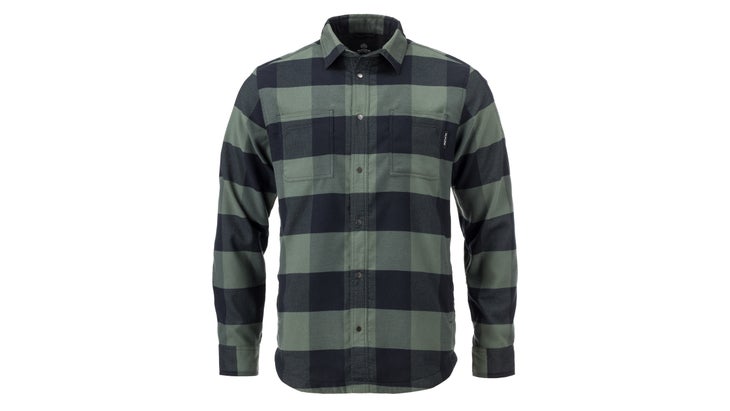
Best for Spring Skiing
Flylow Lassen Fleece Lined Flannel
Weight: 1.39 lbs
Sizes: S-XXL
Warmth: 8/10
Breathability: 5/10
Durability: 8/10
Pros and Cons
⊕ Street/slope crossover appeal
⊕ Good wind protection
⊗ On the heavier side
⊗ No recycled materials
Flannel button-downs never go out of style—especially not in ski country. If rocking a crinkly nylon shell at après or on the fat bike isn’t your jam, the Lassen Fleece Lined Flannel might be. Flylow clearly designed this shirt with outdoor rigors in mind. Along with a liner of fleece soft enough to wear next to skin, a zippered interior pocket can secure your RFID ski pass, car keys, or other valuables while the snug collar snaps extra high to seal in heat. The interior sleeves are lined with a slippery taffeta to ensure frictionless pole plants on the uphill skin track. With its double-layer construction, the Lassen provided our testers with enough wind protection to wear as an outer layer for sunny spring ski conditions, and garnered a few approving nods on the lodge deck after.
How to Choose a Fleece
Fleece jackets range in warmth, breathability, and weather protection. Here’s how to judge what will serve your needs.
Will You Pack It?
As a rule, fleece isn’t as compressible as, say, goose down. So it takes up considerable space in luggage or backpacks. If you need serious insulation but only occasionally, so that it remains packed most of the time, you might consider other, more space-saving insulated jackets. Amongst those we tested, the is the lightest and most compressible.
How Much Will You Sweat in This Fleece?
Some fleeces use a dense construction that traps in body heat but limits breathability. If you’re cross-country skiing, running, or logging outdoor workouts that involve constant exertion, look for lightweight fleeces or hybrid constructions that place breathable, less-insulated panels under the arms and in other hot spots. While all of these fleeces offered great breathability, was a bit of a unicorn, offering exceptional breathability with a decent dose of wind resistance for high aerobic output.
Will You Wear a Water- and Windproof Shell over This Fleece?
Most fleeces offer some water resistance, but that varies—and no fleece can be counted on to deliver complete waterproof protection against rain or sustained snow. Most fleeces are also porous enough to let breezes in, which is great for sweat mitigation but bad for comfort amidst 30-mph winds. Consider whether you’ll wear a shell sometimes, always, or never: Ski-tourers might choose a fleece with some weather-resistant panels, like Columbia’s , so they can skip a shell when it isn’t frigid. Resort skiers are better off with breathable fleece worn always under a shell jacket, like the .
Do You Run Cold?
If you’ll wear the fleece in 0-10 degree temperatures, or if you’re always chilly no matter the conditions, choose a thicker, high-pile fleece like the .
How We Test
- Number of testers: 7
- Number of products tested: 25
- Mountain ranges represented: 14 (Whites, Greens, Front Range, Gore Range, Bitteroots, Selkirks, Monashees, Wasatch, Teton, Pioneers, Sawatch, Park, Mosquito, Gros Ventre)
- Moose successfully dodged on-slope: 2
Last winter we found that more than half of our test crew were teachers, and it turned out that these were our ideal evaluators. For one thing, their need to get out skiing, running, cycling, and climbing was uncompromising, if only to recharge for another week in the classroom. That meant that they went out no matter the conditions, pushing these garments to their limits. For another, they are used to grading stuff, and welcomed the opportunity to evaluate the performance of a midlayer instead of another middling essay on Moby Dick.
For this test, we put as many fleece models as we could get our hands on through the rigors of skiing, climbing, running, and snow biking in cold and uncomfortably wet conditions across North America. Of the 25 we evaluated, we wore full-zip models and pullovers, wool and synthetic pieces, heavy and lightweight layers. Our testers graded warmth, breathability, fit, durability, sustainability, and price. Their verdicts led us to select only the best of the batch.
Meet Our Lead Tester
Frederick Reimers was raised at a canoe-tripping summer camp in Ontario, Canada and had completed a trio of 40-day expeditions before he even shipped off to college. When his parents sold the camp and moved to Jackson Hole in the 1990s, he followed. He has made a career of scribbling about outdoor culture and gear ever since. In addition to ���ϳԹ���, his work has appeared in The New York Times, Smithsonian, Bloomberg Business, and SKI. While Wyoming’s long winters do feel a little drawn-out come April, that makes it the perfect place to test layers. Find Reimers testing them on ski slopes, Nordic tracks, and bitterly cold predawn dog walks around town.


